|
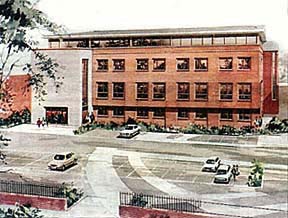  hose
readers
who
have
made
it
this
far through
the
sorry
story
of
the
Chester
amphitheatre,
and
therefore
presumably
formed
their
own
opinions
regarding
the
development
proposals,
may
be
interested
to
see
the
'artist's
impression'
of
McLean's
masterpiece
which
appeared
in
the
local press
at
the
time.
The
architects
were Downs
Variava of Didsbury,
Manchester. hose
readers
who
have
made
it
this
far through
the
sorry
story
of
the
Chester
amphitheatre,
and
therefore
presumably
formed
their
own
opinions
regarding
the
development
proposals,
may
be
interested
to
see
the
'artist's
impression'
of
McLean's
masterpiece
which
appeared
in
the
local press
at
the
time.
The
architects
were Downs
Variava of Didsbury,
Manchester.
It
did
not
go
unnoticed
that
their
design
bore
a
remarkable
similarity
to
the
hotels
previously erected
by
McLean's
on Princes
Dock and at the Old Haymarket in
Liverpool city centre.
But then, it seems, so does much else of their 'off-the-peg' brand of architecture.
Note
the
semi-circular
lines
in
the
car
park
indicating
the
buried
monument
beneath-
the
excavated
portion
of
the
amphitheatre
lies
out
of
shot
on
the
right. Sounds like a bad joke but here are some photographs of the real thing...
• Several years later, in January 2007, the author noted that the scruffy painted indications of where the monument lay beneath the car park had been greatly improved- by replacing them with rows of cobblestones.
Equally
incomprehensible
were
some
of
the
tiny
thoughts of
the
leaders
of
the
political
parties
within
Chester
City
Council. In
a
surely-unprecedented
act
of
party
unity,
they
issued
a
joint
statement
strongly
criticising
this
author.
Signed
by
Councillors John
Price (Labour), Graham
Proctor (Lib
Dem), Brian
Bailey (Conservative)
and Doug
Haynes (Independent),
they
accused
him
of
urging
potential
visitors
to
boycott
Chester
and
that he
was "betraying
the
city,
putting
jobs
and
livelihoods
at
risk
and
undermining
the
tremendous
work
being
done
to
maintain
Chester's
reputation
as
'The Jewel
of
the
North. We
would
urge
people
who
visit
Chester
to
make
their
own
minds
up
about
the
heritage,
culture,
top
quality
shopping
and
beautiful
countryside
that
has
helped
establish
our
renowned
international
reputation...
besmirching
the
city
on
the
world
wide
web
is
not
the
way
to
win
an
argument
and
does
everyone
a
great
disservice".
As
indeed
did
maliciously misrepresenting
what
was
actually
written, and
publishing
it
on
the City Council
website.
Betrayal
of
our
fair
city over the matter of the amphitheatre (let alone the old Market Hall, Electric Light Building, Grosvenor Precinct Roman Bath House and, doubtless coming soon, the Northgate Development)
there
most
certainly
was-
in
cartloads-
but
certainly
not
from
this
direction.
Cllr
Bailey in
particular
should
have
noted
that
fellow
Tories,
such
as
the
prospective
Conservative
candidate
for
the
City
of
Chester, David
Jones,
the
Shadow
Culture
Secretary, Peter
Ainsworth and
ex-Environment
Minister, John
Gummer were
all horrified by
the
redevelopment
proposals
and
issued
press
statements
to
that
effect.
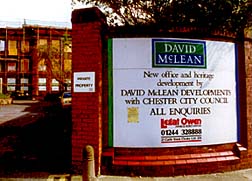 (However,
to
his
immense
credit,
Cllr
Bailey
has
since
been
prominent
among
opponents
of
the
courthouse
and,
in
late
April
2000
was
brave
enough
to
publicly
state, "It
was
a
mistake,
and
we
were
all
to
blame"). (However,
to
his
immense
credit,
Cllr
Bailey
has
since
been
prominent
among
opponents
of
the
courthouse
and,
in
late
April
2000
was
brave
enough
to
publicly
state, "It
was
a
mistake,
and
we
were
all
to
blame").
Right: Jumping
the
gun?
This
sign
at
the
entrance
to
Dee
House
long
declared
'New
office
and
heritage
development
by
David
McLean
with
Chester
City
Council'-
despite
no
decisions
having
been
made
regarding
the
future
of
the
building.
It
only
disappeared
when
members
of
the
public
kicked
up
a
fuss.
The aforementioned Mr
Jones-
who
assured
us
that
Chester's
Conservatives have
always
opposed building
on
or
near
the
amphitheatre-
wrote in the local press, "Until
the
late
1920s
the
existence
of
the
amphitheatre
was
a
matter
only
of
speculation.
Its
discovery
was
a
sensation,
and
when,
in
the
1930s,
it
was
planned
to
build
a
new
road
through
the
site,
there
was
an
international
outcry.
The
amphitheatre
is
the
largest
in
Britain
and
is
a
treasure
to
be
cherished.
I
find
it
impossible
to
believe
that
the
new
court
had
to
be
built
here,
and
could
not
have
been
built
on
one
of
any
number
of
other
sites
around
the
city.
If
Chester
is
to
continue
to
attract
visitors
and
maintain
its
position
as
a
heritage
city
of
international
importance,
it
must
find
ways
of
protecting
sites
such
as
the
amphitheatre
and
presenting
them
in
an
imaginative
way
that
respects
their
archaeological
significance. Quite
simply,
Chester
deserves
better.
I
hope
that,
even
at
this
late
hour,
a
way
can
be
found
of
stopping
the
Court
development.
If
not,
then
the
question
must
be
asked: How
on
earth
was
this
allowed
to
happen?"
How
indeed.
Former minister John
Gummer,
writing
in Construction
News in
May
2000,
criticised
the
development
as "a
second-rate
building,
despoiling
a
first-class
archaeological
site,
in
a
city
of
world
renown".
In
the
article,
he
blamed
the
Lord
Chancellor's
Department
for
the
development,
accusing
it
of
commissioning
a
succession
of
poor
quality
buildings. He
continued: "Now
they've
surpassed
themselves
in
Chester
by
threatening
to
build
a
really
mediocre
building
on
the
site
of
the
Roman
amphitheatre
in
one
of
the
great
cities
of
Europe.
As
a
result,
we
shall
lose
the
last
chance
to
excavate
the
Roman
remains
that
have
yet
to
been
seen
in
modern
times.
There
is
no
doubt
whose
responsibility
this
is.
It
is
the
client-
Her
Majesty's
Government".
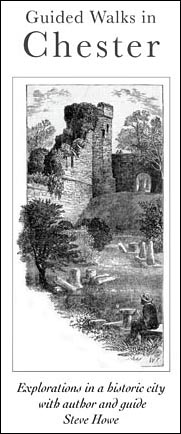 Peter Ainsworth had
this
to
say:
"Chester's
Roman
heritage
is
one
of
the
glories
of
England.
What
will
future
generations
think
of
a
city
council
which,
given
responsibility
for
the
largest
amphitheatre
in
Britain,
decides
to
build
a
court house
on
it?
It
frankly
beggars
belief
that
planning
permission
was
granted
in
the
first
place.
We
should
be
investing
in
our
cultural
heritage
and
displaying
it
with
pride,
not
burying
it
under
concrete
and
". Peter Ainsworth had
this
to
say:
"Chester's
Roman
heritage
is
one
of
the
glories
of
England.
What
will
future
generations
think
of
a
city
council
which,
given
responsibility
for
the
largest
amphitheatre
in
Britain,
decides
to
build
a
court house
on
it?
It
frankly
beggars
belief
that
planning
permission
was
granted
in
the
first
place.
We
should
be
investing
in
our
cultural
heritage
and
displaying
it
with
pride,
not
burying
it
under
concrete
and
".
Mr
Ainsworth
also
wrote
to
the
Arts
Minister, Alan
Howarth and
to Sir
Jocelyn
Stevens,
Chairman
of
English
Heritage,
to
express
his
deep
concern
and
Mr
Jones
contacted
Chester
City
Council
Chief
Executive, Paul
Durham,
to
seek
assurances
that
the
new
County
Court
building
to
be
erected
on
the
site
of
Chester's
Roman
amphitheatre
complied
entirely
with
the
terms
of
the
planning
permission
granted
in
April
1995.
"The
planning
permission
was
for
'new
build
offices',
intended
as
the
corporate
headquarters
of
the
developers"
said
Mr
Jones.
"The
building
now
planned,
however,
is
a
courthouse,
containing
three
courtrooms.
Although
there
will
be
ancillary
offices,
it
seems
to
me
that
the
primary
use
of
the
building
is
rather
different
from
what
was
proposed
in
the
planning
application.
There
is
considerable
opposition
in
Chester
to
this
project,
and
I
think
it
fair
that
Chester
City
Council
should
be
asked
to
give
the
public
a
total
assurance
that,
in
terms
of
planning
law,
a
courthouse
is
identical
to
an
office
block".
In
Mr
Durham's
reply,
he
agreed
that
there
was
indeed
a
change
of
use-
but
not
a material change
of
use.
The
highly-respected Chester
Civic
Trust held
a
special
meeting
about
the
amphitheatre
on
7th
February
2000
at
which
"it
was
alleged
that
a controversial
planning
decision
had
been
made
by
a
council
officer
without
any
consultation
with
the
full
council and
it
was
agreed
by
all
present
to
individually
contact
all
the
relevant
authorities
concerned
in
an
attempt
to
have
that
decision
reviewed".
What could this
have
meant?
The
officer
in
question,
there
was
little
reason
to
doubt,
was
none
other
than
City
Council's
former
'Conservation
Officer',
one Peter
de
Figueiredo,
less-than-fondly
remembered
locally
for
such
splendours
as
the
ludicrous
roof
needlessly
added
to
the
medieval
Thimbleby's
Tower,
the
wooden
bollards
that
now
clutter up
much
of
our
city
centre
and,
of
course,
those
flagpoles
in Market
Square.
A
richly
deserving
winner
of
the
1998
Bob
Clough-Parker BCP
For
Taste
(All
Bad) Award and
whose
name
produces
the
strangely-appropriate
anagram, 'EERIE
FIDGET
DOER-UP',
even
publicly-available documents showed
that
he
was
engaged
in
negotiations
with
Court
Service
architects
as
long
ago
as
November
1998- over
a
year before
the
people
of
Chester
got
wind
of
the
proposals.
All
this,
of
course,
was
before
his
departure
to
take
up
a
senior
regional
position
with
English
Heritage,
who,
we
recall,
have
since
contributed
greatly
to
the
confusion
due
to
their
unbending
opposition
to
further
excavation
of
the
amphitheatre...
(A
gauge
of
the
great
one's
taste
may
be
ascertained
from
his
comments
at
a
public
lecture
later
in
2000
about
the
monstrous
1960s
facade
of
the Chester
Market
Hall.
Regarding
its
recent
replacent
by
Scottish
Widows,
he
felt
that
"Chester
may
come
to
regret
the
loss
of
this
bold
building")
City
council
press
officer, Michael
McGivern was
quoted
in
the Chester
Chronicle in
May
2000,
saying
that
councillors were informed
about
the
change
of
use
from
offices
to
courthouse
in
November
1998,
but
the
councillors
themselves
declared
that
they
knew
nothing
of
the
proposals
until
December
1999, thirteen
months later!
Who were we
to
believe?
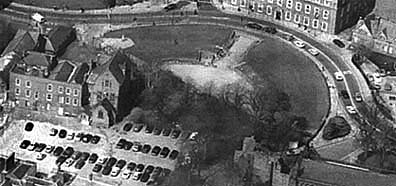 Around
this
time,
the
Civic
Trust
was
taking
the
lead
in
Chester's
celebration
of 2000
Years
of
Building by
preparing
a
signposted
'heritage
trail'
to
assist
our
visitors
in
finding
their
way
around
what
architectural
splendours
Chester
still
had
to
offer.
We
much
doubted
at
the
time
that
McLean's
artless
efforts
would
be
qualifying
for
a
blue
plaque. Around
this
time,
the
Civic
Trust
was
taking
the
lead
in
Chester's
celebration
of 2000
Years
of
Building by
preparing
a
signposted
'heritage
trail'
to
assist
our
visitors
in
finding
their
way
around
what
architectural
splendours
Chester
still
had
to
offer.
We
much
doubted
at
the
time
that
McLean's
artless
efforts
would
be
qualifying
for
a
blue
plaque.
Right:
an
aerial
view
of
the
excavated
northern
half
of
the
Chester
amphitheatre.
Dee
House
is
on
the
left
and
the
car
parking
area
below
it
is
now the
site
of
McLean's
County
court
and
office
complex. St. John's
Church is
seen bottom
right.
Another
fine aerial
view
of
the
site
may
be
seen here
The
local
press
of
February
11th
2000
quoted
former
city
archaeologist,
now
employed
by
commercial
consultants
Gifford's, Tim
Strickland as
claiming
that
"the
amphitheatre
would
cost £5
million to
excavate"
but
that
"national
funding
is
unlikely
to
be
forthcoming
as
English
Heritage
is
opposed
to
excavation".
It
was
therefore
suggested
that
"this
would
result
in
a
rise
in
council
Tax
bills
of
£11
per
year
for
the
next
ten
"...
Although
we
personally
thought
these
figures-
presumably
based
upon
what
his
company
would
have
charged-
were
deeply questionable,
we
were
nontheless
convinced
that
a
great
many
individuals
and
businesses
in
Chester
and
beyond
would
have
been
more
than
willing
to
contribute
in
order
to
see
that
this
great
monument
was
dealt
with
in
a
way
that
we
could
all
be
proud
of.
But
were
they
ever
given
the
chance?
Compared
to
the
£50
million
quoted
as
the
eventual
(?) cost
of
the
ludicrous CDTS
Busway,
surely
a
small
fraction
of
this
could
be
found
to
save
this nineteen
hundred
year
old monument?
In
fact,
five
million
pounds
seems
like
remarkably
good
value
for
money
considering
the
economic
and
cultural
benefits
a
fully-excavated
amphitheatre
would
doubtless
bring
to
our
city
in
the
years-
even
centuries-
to
come.
Standing
upon
the
City
Wall near
the
Newgate
in
late
February
2000,
it
was
ironic
to
see
the
effort
being
put
in
to
the
restoration
of
the
so-called Roman
Garden,
just
across
Souter's
Lane
from
the
amphitheatre,
right
down
to
the
mosaic
work,
marble
benches
and
newly-planted
cypress
trees.
Now
completed,
it
looks
splendid
and
is
a
great
asset
to
the
city,
but
it
remains,
nontheless,
little
more
than
a
pretty
sham,
its
collection
of
columns
and
other
relics
having
been
largely
torn
from
their
original
locations
during
the
construction
of
the Forum and Grosvenor
Precinct.
Whereas,
looking
beyond
it,
the genuine
article was
being
shamelessly
abused:
one
could
watch
a
digger
at
work
on
the
edge
of
the
site
and
see
a
growing
pile
of
sandstone
blocks
piling
up
next
to
it,
and
by
a
few
months
later,
the
concrete
'raft'
was
laid
and
the
new building
was
being
rapidly
erected.
Who
do
you
think
was
Chairman
of
the
Planning
Committee,
back
in
April
1995,
that
granted
permission
for
all
this
to
go
ahead
in
the
first
place?
None
other
than
Chester's
then-
Member
of
Parliament, Christine
Russell,
who
was
doubtless
be
less-than-pleased
that
the
matter
had
been
discussed
at
Westminster
and
that
her
constituency
had
become
the
subject
of
international
ridicule
and
disbelief.
Despite
which,
she
long
failed
to
make
any
public
statement
whatsoever
upon
the
subject.
The Chester
Chronicle reported,
however,
that
she
had
told
them
she
"didn't
remember"
how
she
voted
at
the
time,
but,
remarkably, did recall
arguing
that
"the
plan
should
be
sent
back
for
a
complete
re-design".
Uh-huh.
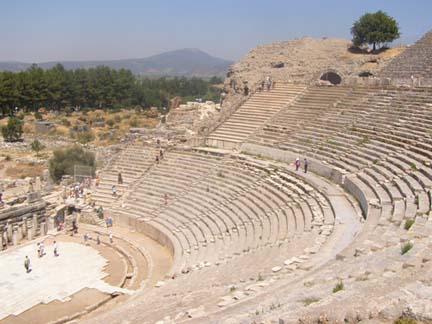 The
people
of
Chester
and beyond are
unlikely
to
forget
the
actions-
or
lack
of
action-
of
those
politicians,
planners
and
developers
concerned
for
many,
many
years
to
come. When
air
raid
trenches
were
dug
across
part
of
the
amphitheatre
site
in
1939,
the
father
of
archaeology
in
Chester,
the
great Professor
Robert
Newstead wrote,
"What
an
outrage!
A
monstrous
piece
of
stupidity
and
wanton
destruction"...
We
wondered
what
he
would
have
had
to
say
regarding
the
contemporary
situation? The
people
of
Chester
and beyond are
unlikely
to
forget
the
actions-
or
lack
of
action-
of
those
politicians,
planners
and
developers
concerned
for
many,
many
years
to
come. When
air
raid
trenches
were
dug
across
part
of
the
amphitheatre
site
in
1939,
the
father
of
archaeology
in
Chester,
the
great Professor
Robert
Newstead wrote,
"What
an
outrage!
A
monstrous
piece
of
stupidity
and
wanton
destruction"...
We
wondered
what
he
would
have
had
to
say
regarding
the
contemporary
situation?
Putting Chester's amphitheatre somewhat to shame is the great Roman theatre on the slope of Panayir Hill, Ephesus, Turkey. Originally built in the 3rd century BC, it will seat 25,000 spectators and is still used for major concerts today. Photograph by the author.
A
correspondent
in
the
local
press
around
this
time
made
the
entertaining
suggestion
"Why
not
get
a
couple
of
lions
from
Chester
Zoo
and
see
how
our
elected
representatives
will
fare
in
half
an
amphitheatre
with
not
much
room
to
manoeuvre?
Daniel
made
it-
why
shouldn't
the
people
of
Chester?"
On
5th
April
2000,
a
packed
public
meeting
at
Chester
Town
Hall
gave
its
overwhelming
support
to
the
setting
up
of
a
charitable
body-
the Chester
Amphitheatre
Trust-
with
the
long
term
aims
of
acquiring
the
site
of
the
amphitheatre,
fully
excavating
it
and
running
it
as
a
public
amenity.
The
very
next
day after
this
meeting,
the following
press
release
appeared
on
the
City
Council's
own
website:
'City Council is Protecting Amphitheatre'
Protection for future generations, not destruction of Chester's Roman
amphitheatre and two listed building is Chester City Council's aim.
That's the response of head of communications, Mike McCabe to those campaigning
for a full excavation of the site. He says," We are and always have been sympathetic
to the idea of full excavation at some time in the future, but the council
cannot intervene in development of the new county courts which will, in any
event, take up less than 2% of the uncovered site. Also we could never support
some of the proposals for full excavation of the amphitheatre being aired
now because they would require demolition of the listed Dee House and the
medieval St John's Tower. This council is determined to protect all of the
city's heritage and is keen to promote the amphitheatre as a public open space
and centre of cultural and educational activity. Central to plans for the
area is the complete restoration of Dee House. The council is now working
with developers on proposals for the rejuvenation of the whole area. Ideas
being discussed include:
* Removing the unsightly wall that bisects the site;
* Creating a public piazza in front of Dee House for leisure and cultural
activities
* Using the amphitheatre for staged music and drama
* Interpretation of the history of the site, to encourage tourists and educational
visits
* Community archaeological projects, involving local people in supervised
small-scale excavations which will gradually reveal more of the monument
* Improved access including access to the arena for people mobility problems"
Read
what
people
really
think: a
growing
collection
of letters Go
on
to Part
IV - or visit the ancient Church of St. John the Baptist..
Top
of
Page | Site
Front
Door | Site
Index | Chester
Walls
Stroll
Introduction | The
Amphitheatre
I | 01 | II | IV | V | VI | VII | VIII | IX | X | XI | XII | XIII | Gallery | 2
St. John's
House | Chester Amphitheatre Project | Letters
page
1 | 2 | 3 | 4 | 5 | 6 | 7 | Some
alternative
views | 'Round
in
Circles'
by Flavius
Save
the
Chester
Amphitheatre! (1932) | On
to
St. John's
Church
|